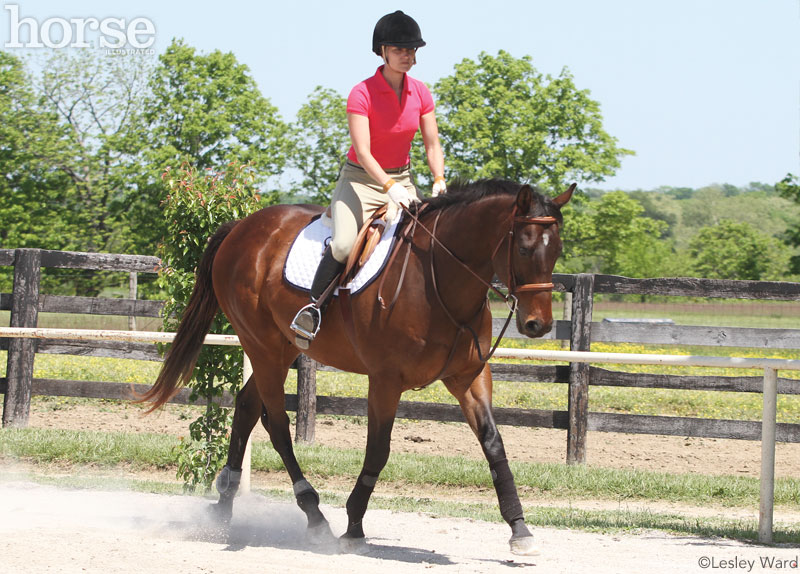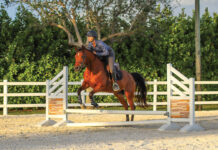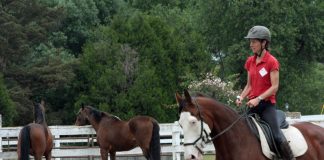
Wood’s unique training style makes hard-to-grasp riding concepts easy to understand. The half-halt certainly falls under the category of hard-to-grasp, but with Perry’s help, it doesn’t have to be that way.
Trot in a dressage arena and ask for a transition to the walk at A, E, C and B, and then move straight back into the trot after a couple of walk strides. The horse will quickly understand the pattern and become responsive to your aids. After a few circuits around the arena, start to ask for the downward transition at the same letters, but instead of coming down to the walk, at the last moment, change your mind and ask the horse to remain in trot.
“You’ll find the horse is waiting for you to ask for the walk at the letter and you’ll find you can give the tiniest suggestion of a half-halt. The horse will rebalance himself and you can carry on. If you do that a couple of times around, you’ll find the horse gets really responsive to the half-halt and becomes increasingly balanced.”
Help! Why Isn’t it Working?
So what happens when your horse keeps going and going despite your half-halts? In fact, your horse seems to be getting faster. Don’t despair. Loads of people have had this experience, including Wood. “If things are so out of hand and your horse is just running off, put him on a (large) figure eight,” he says. “He’ll soon realize that his legs are putting in a lot of effort and he’s getting nowhere fast! He may soon decide that slowing down was a good idea after all.”
You can also ask the horse to halt completely and stand for two minutes. Start again, and the next time you stop give the horse another two-minute rest. Then trot another 40 yards and give another two-minute rest. “Very soon, your horse will begin looking for the halt,” Wood explains. “And then you can think about evolving that into a half-halt. So when your horse begins to quicken, think that you want to stop completely. As you feel him shift downward, change your mind and move on again,” Wood instructs.
Keep repeating for as long as you need to until he’s moving in your tempo and not his own. “You’ve got to look at this from the horse’s point of view,” Wood says. “What’s in it for him? If he thinks he’s going to get a rest, then he’s going to give to your half-halt!” If you do a mixture of these two exercises you’ll find your horse transforming very quickly.






Very well written and easy to understand. Most of all, it makes good horse sense. I’ll be trying it out today.
Great tips thanks Ill try them tomorrow when I take my horse out.
Very helpful!! Thank you
This was very easy to understand, and I will use these exercises when I ride this evening. Again, thank you,
thank you very much my horse wants to trot all the time i cant walk her i will try this out im training for a carriage cheers steve
This is a great article. It really simplifies the half-halt.
It’s probably excellent, but I feel like I’ve been there and done that with no results. This TB mare, age 19, does not want to canter in a relaxed, on her butt, canter. Ive only been riding her about a year. Somedays it’s better than others but for the most part it’s a competition.
I can circle till I’m dizzy, and she will eventually slow down/stop but she can be a bully. She’s more collected during a jump sequence, but nose down barges and wants to RUN as soon as she has a chance.
She’s a force to be reckoned with. She has a very sweet disposition but once I’m on board, she’s Alpha. I don’t like to use the crop but do carry one and throw it away once we get warmed up. She hates it.
help! I’m 63, very strong, weigh about 120 +/- and have ridden for many years. I love the challenge but I’d like to feel like we’re getting somewhere. My dressage friend says she needs to be on her haunches – this I know 🙂 Now, how do I slow her down?
I love these tips. They really make working with horses simpler and clearer! Thanks, HC! Keep them coming!